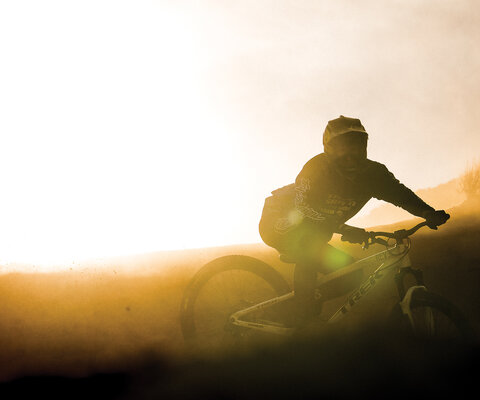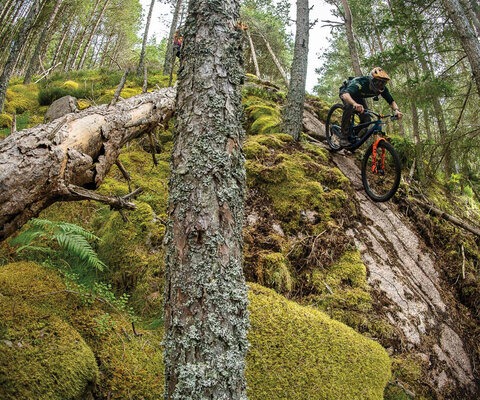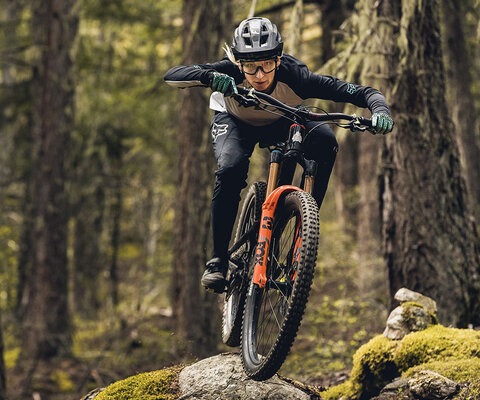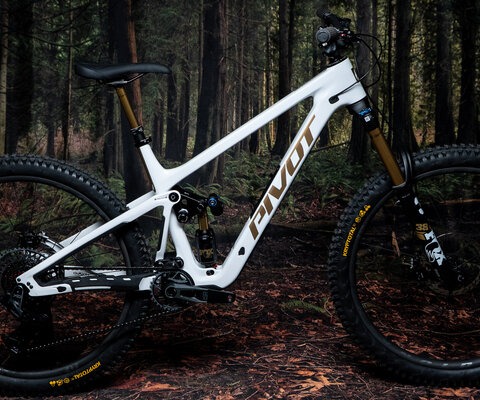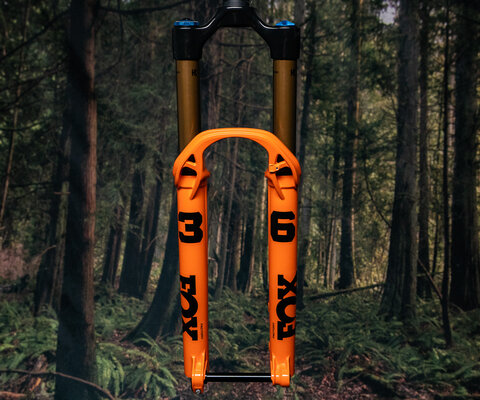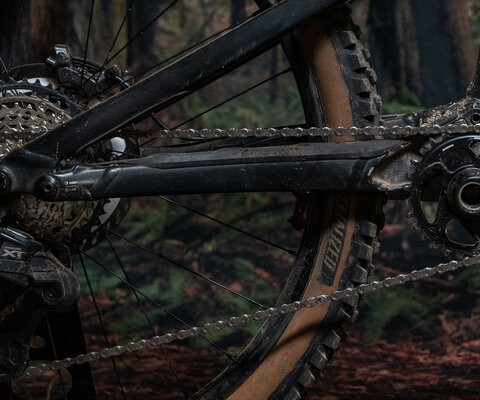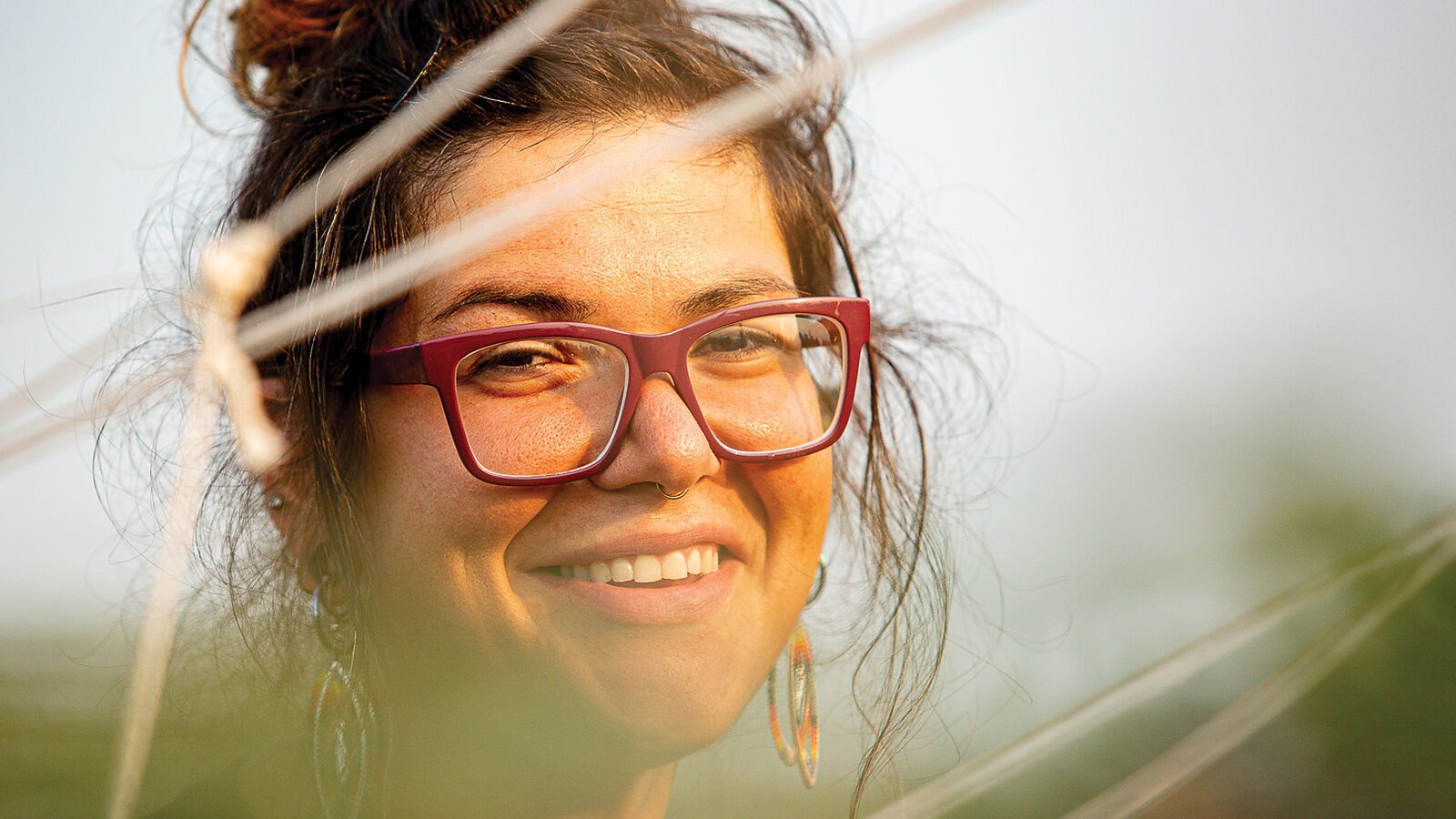
One Drop at a Time Alexandera Houchin's Steadfast Journey of Self-Discovery
Words by Alexandera Houchin
I grew up knowing my mom was Native, but the fact that she was adopted out of our tribal community as a young child made my identity seem like a fantasy.
The only Natives I ever saw growing up were on butter boxes, in cartoons (Pocahontas, Popeye and Peter Pan) and in history books, depicted eating supper with Pilgrims. Of course, I didn’t look like those Natives and neither did my family members. So, if we didn’t look Native, if I was estranged from my tribal community and if I couldn’t be understood by animals like I saw in the cartoons, it seemed as though I should let my Native identity dissipate. In mainstream society, there is little Indigenous visibility. In the cycling world, there is even less.
Despite this, I’ve carved out a home of sorts within the realm of ultra-racing, a niche discipline in which mountain bikers spend days—sometimes weeks—racing long distances without any outside assistance. The ultra-racing domain is populated by a small group of people, many of whom I’ve come to know. I hold the women’s singlespeed records for the 2,700-mile-long Tour Divide Race, the Colorado Trail Race (in both directions), as well as that of the Arizona Trail 300 race. For just about every big ultra-race, I scan the roster for familiar names and see friends listed, yet I rarely meet other Native people. In fact, I don’t think I’ve ever met another Native at a starting line. Deep in my spirit, I envision a world in which more Natives lined up to race but I’m not sure how to make that dream a reality.
Why bring my cultural identity into racing? In short, because my entire life—including my strength on the bike—is defined by my identity as an Anishinaabekwe (Ojibwe woman). From my identity springs a deep connection to my tribal community and a driving desire to be a contributing citizen of my nation. My spirit gets polluted by compounded self-neglect in my day-to-day life. Without racing, I feel a disconnect from knowing who I really am. I race bikes to escape my perceived inadequacies and reconnect with my spirit. I race bikes to stay accountable to my well-being. I race bikes because, through racing, I’ve found a way to incorporate ceremony into my life in a way that feels right. It was only after participating in traditional Anishinaabe ceremony in my tribal community, that I truly understood I was creating my own type of ceremony through racing.
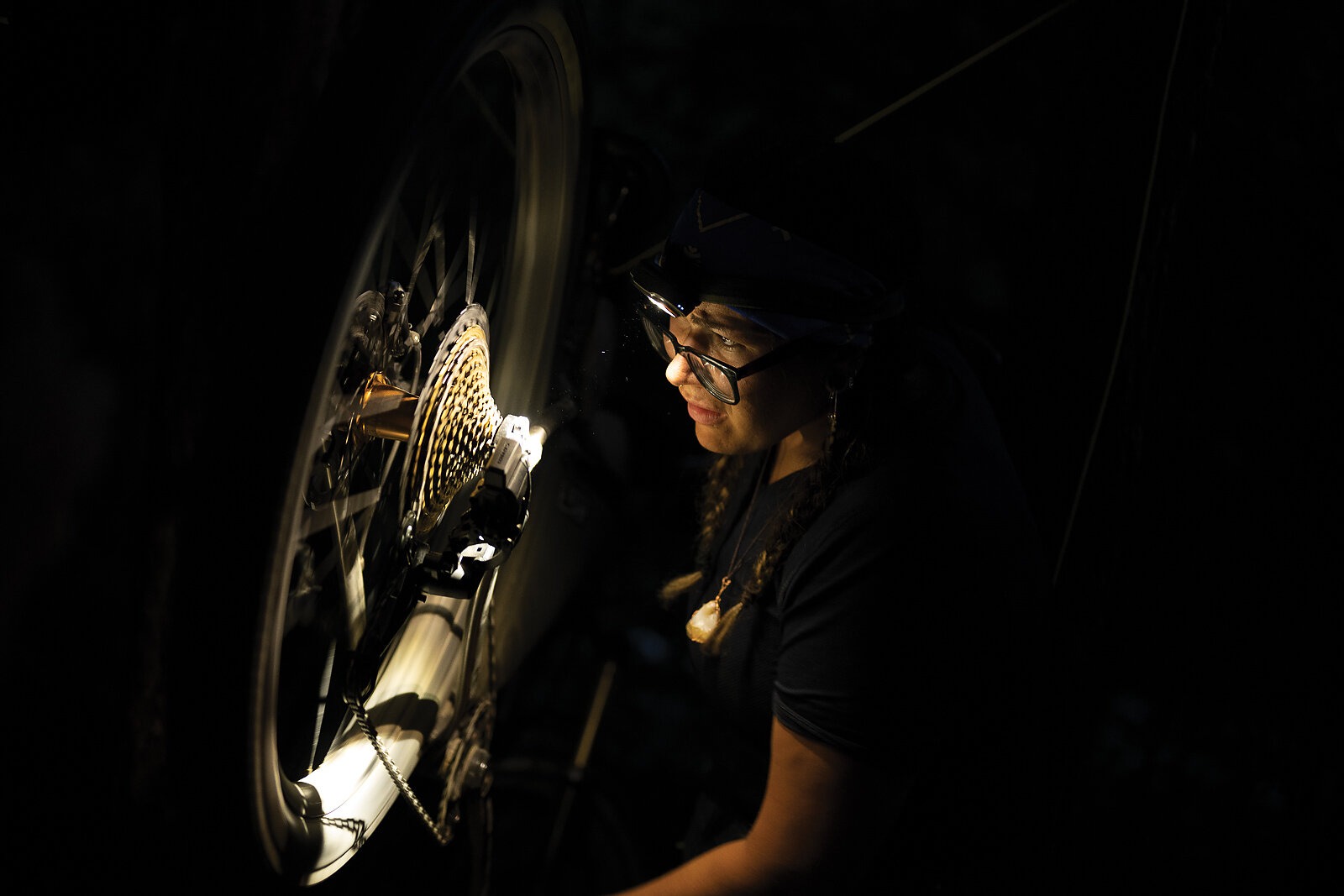
My Indigeneity, as I’ve grown to understand it, is the most defining factor of my existence. I’m a bike racer, a daughter and a sister. I’m also a person in a series of people who were given the gift of a language that explains our world in a way I didn’t know existed before coming home. My Native identity and my cyclist identity cannot—and do not—exist in a vacuum. The two identities are interwoven; a mycorrhizal system of life that consumes me.
It’s taken me time to nurture this connection. Though, as I’ve come to realize, I created ceremony along the trail before I even knew what it was, or what it meant. I try not to paint a romantic visual of Indigeneity. It’s messy and exhausting at times. For years, I have toiled with existential questions. Do I pick my tribe? Or do I choose the bike? How am I supposed to be a good Native?
I constantly tread a line that bisects my identity as a cyclist and my identity as a relative. I use the word “relative” because I am not just a member of a tribal community. I am the citizen of a distinct nation, a resident within the 1854 Ceded Territory—tied to all people who lived before me and to all people who will come after me. I am of this land. I am related to the trees, the rivers, the lakes and the animals. I feel a deep sense of responsibility and belonging to the beings who still live in our homelands. I know of the ways we ended up here and I know the reasons we continue to hold this space.
My life has been about bikes for the past decade, but it’s hard to remember exactly how it all started. I tell stories of how I asked my step-mother’s parents for the bike they let me ride when they dragged me on bicycle rides as a teenager. I spray-painted the whole damn thing purple—the chain, the pedals and everything else that was metal. It wasn’t even because I wanted to ride. It was for some autonomy.
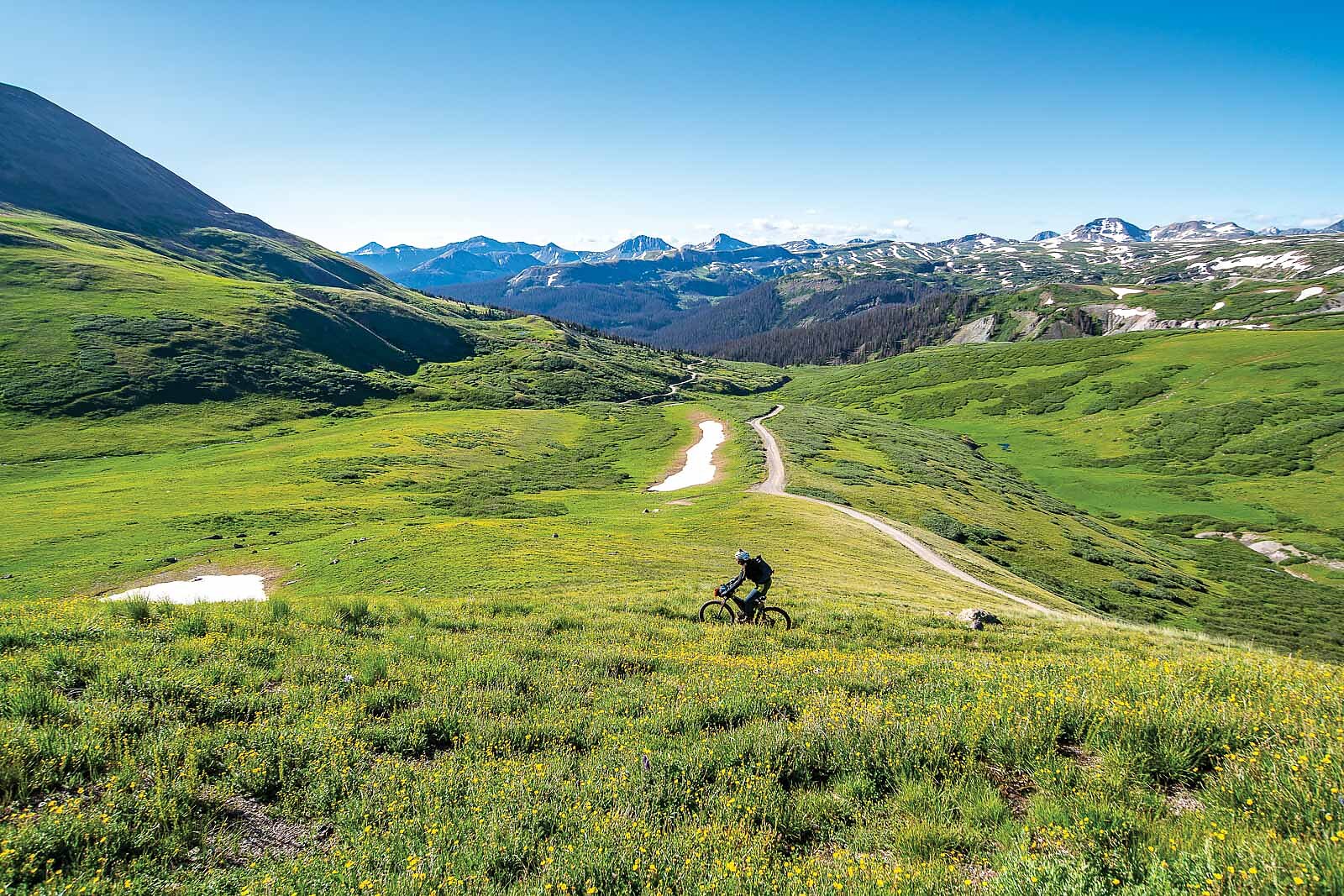
For a time, bikes helped me escape the anxiety that came with driving a car. When I was 18 years old, I hit a motorcyclist as I was pulling out of a grocery store driveway. He tore off my front bumper and I watched him soar through the air. I thought I had killed a human. I was relieved to see that he could move as he heaved his body up from the pavement. I had no interest in keeping that car and sold it.
I took the bus to and from work in the days after and rode passenger with my first serious girlfriend. We did everything together, but it wasn’t long until our relationship fell apart. I was young and had developed a habit of lying. There was no trust between us. What was once love turned to control and manipulation. I relied on her for everything. My purple bicycle was my solitude. I started commuting 10 miles each way to work. It helped me escape and create space for me to build myself up again.
My bicycle was also another way for me to burn calories. Slowly consumed by an eating disorder, I was well into a 100-pound weight loss. Engulfed in the same battle, my partner and I refused to eat at home. Losing weight became a contest and drove us further apart. She would try to force me to eat and I wouldn’t let her. My diet was the only thing left to control. I rode 20 miles a day, often without having eaten for three-to five-day stretches. It did something to me—something like drugs used to do.
We broke up and, seeking to reinvent myself, I found a “cute brakeless fixie” for $125 on Craigslist. I had no idea what I was getting myself into. I crashed that bike so many times before I began to understand what that machine was. I started riding it to a class I was taking at the community college. This man, this tall, stunning, smooth-talking man came up to me and was instantly impressed by my bicycle. He invited me to ride with his other fixie friends.
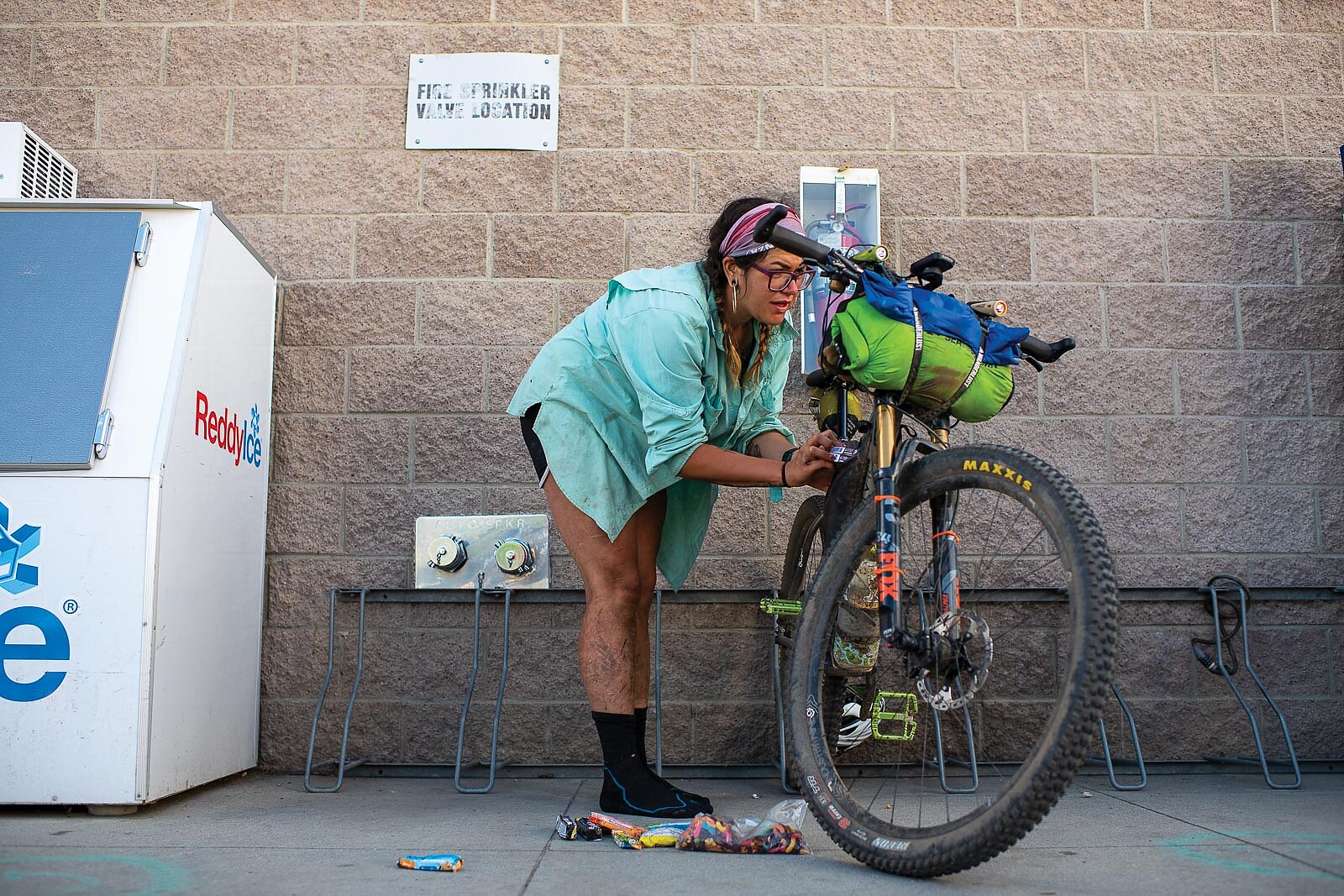
This experience made me question everything I knew about myself. I had already come out as a lesbian to my family and friends, and I’d been seriously dating women, but I felt curious about exploring love in different ways. I started to ride bikes with the guys every day. I was convinced I could be stronger, faster and better at tricks than they were.
We would ride. We would fly. Those days were filled with hangovers and Parliament Lights. The nights were drunken and sleepless. We filled the patio at the bar on State Street. After a few, we bought six-packs, found parking lots and practiced fixie tricks through all hours of the night. We raced through alleyways, shortcutting through town. We talked about our lives and where our dreams would take us.
I had finally learned how to communicate. I developed the capacity to reveal my spirit. I didn’t have to tell anyone the ways in which my bike was an extension of myself; I revealed it to them in the ways I rode. After spending my life to that point feeling like I was a giant—a massive, hideous oaf—these people perceived me as a woman, as divine femininity. It was during these years riding in Madison, Wisconsin, that I became a woman. My adolescence grew to be a distant memory. I no longer needed to convince anyone of my abilities. I had learned to tame the impossible machine and dance atop the city streets. I dreamt of going farther, of seeing more, of riding my bike among the mountains.
Ceremony developed over time. It wasn’t really something that I even noticed starting to happen. In the beginning, bikes were so much about community and drinking. Later, however, they helped me find balance in the world. The first time I successfully raced the Tour Divide, my mother asked me to collect a drop of water from every body of water I passed for the entire length of the traverse. I thought the task of gathering water would be impossible and overly time consuming but I also knew, based on my failed attempt at the route in 2017, that starting with set expectations didn’t usually end in my favor. So, I emptied out a small squeeze bottle and used it to collect one drop of water at a time. I documented what I could tell the name of the water to be from my map and I wrote notes in my journal every night before I went to sleep.
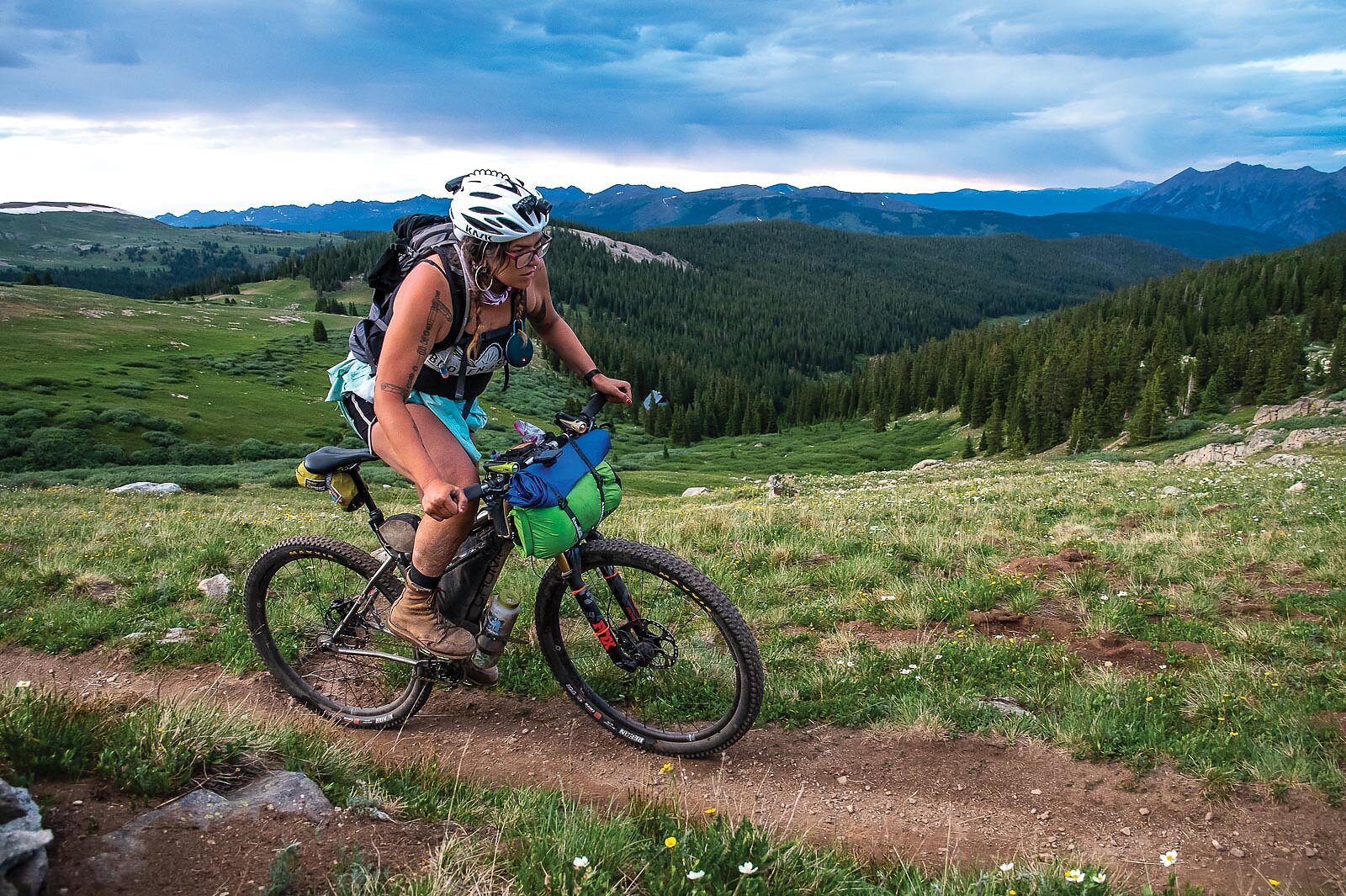
The most important thing I had begun to do during the race was to offer asema before I took anything—water, plants, or even trail magic. The Anishinaabe have four sacred medicines: sage, sweetgrass, cedar and tobacco. Our word for tobacco is asema. Each of these medicines have qualities and provide connection to the spirit world in their unique ways. We offer asema for a multitude of things back home and, during the race, my offerings were a different way of praying than what I had done before. Previously, I offered asema when I needed to ask for help. But, in carrying a fixed amount of asema and offering ever time I took something, I began to realize how much I was taking. This led me to feel a relation to everything.
On the trail, I talked to the world around me. Sometimes I would just think to myself, sometimes I would mumble. Sometimes I would fill my water up and forget to offer asema at first. As I started to ride away full of water, I would remember. Guilt consumed me until I stopped and got off my bike to make an offering. It started to feel more and more like the world was out of balance if I didn’t acknowledge the ways in which akiing (Earth) provided for me. Once I started the practice of making an offering each time I took something I was never able to take anything from the planet again without some sort of reciprocity.
This practice taught me lessons about sacrifice and patience. It taught me that everything we do is about the journey and not the outcome. I was racing, but it was important for me to carry my mother, my relatives with me on that adventure. Because she had asked me to gather the water, I slowed down and experienced the route in a way I hadn’t before. In pushing my body past points I’d previously endured, I was becoming acquainted with a self that I had never met. The first few days of racing my bike in this way were full of self-doubt. The voices telling me to quit were cacophonous. But the voices reminding me of how horrible quitting felt were even louder.
It had taken a failed record attempt to open me to the lessons that come from humility. And it took bravery to show my face at the starting line of a race that I’d previously given up on. I felt like the place where the race traverses remembered me and the weight of my ego the previous year.
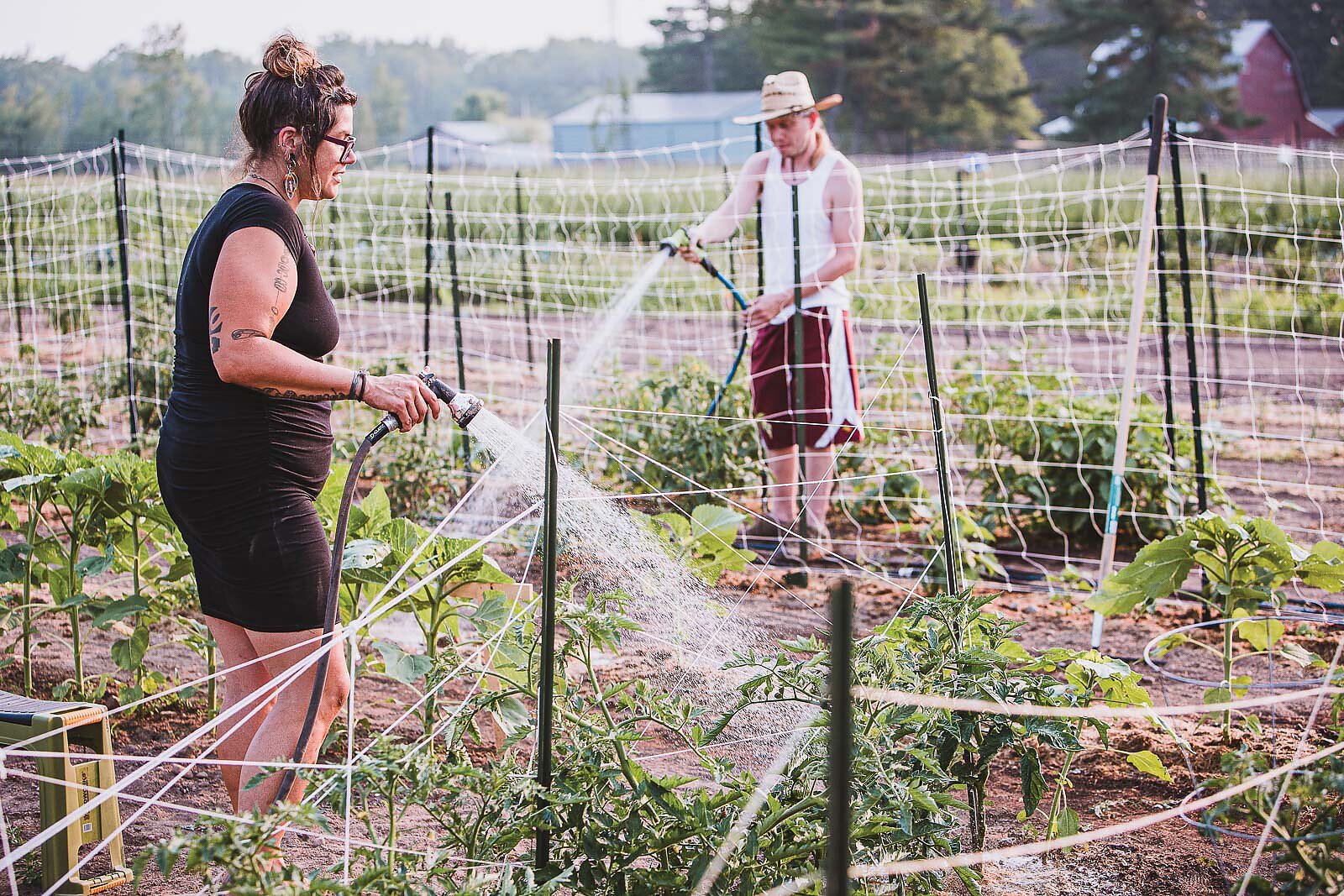
Now, before I race, I set intentions. I try to keep these intentions centered around my life in Minnesota. I hope to become a stronger version of myself when I come home. Even though I’ve been taught many lessons from the trail, I still find myself facing personal defeat numerous times during each race. I sometimes forget about humility and get absorbed in my ego. It’s in these moments that the Manidoog (spirits and ancestors) remind me that I don’t get to control the outcome; I only get the opportunity to show up as my whole self. And which self should I show up as?
I incorporate ritual into my race. I prepare with what I need to carry to keep my intentions at the forefront. I prepare my bicycle by eliminating the negative energy that builds up and I blanket her with positivity for the journey ahead. I introduce myself to the racecourse in the language of my people, Ojibwemowin. I tell it what I know about myself, where I come from and the things I have yet to learn.
I do my very best to keep the racecourse sacred. Because the race is ceremony. If you ride with me, you become part of my ceremony. I don’t know exactly what it’s supposed to look like, but I know how it’s supposed to feel—a space full of vulnerability, humanity and emotion. I know the video camera isn’t supposed to see it because observing the race from the outside is incomprehensible. The dimensions of the self that evolve from pushing day after day grow to be complex in a way words or images can’t capture. To serve the ceremony justice, moments on the course are to be given as gifts to the world that surrounds us.
In this way I hold space as both an Anishinaabekwe and a bike racer. I place my feet firmly in the present and allow my heart and spirit to incorporate ancestral teachings into my contemporary life. I like to think that if my ancestors existed now, they may practice ceremony in similar ways. In bringing ceremony to bike racing, I create an invitation to interpret the racecourse as something sacred.
